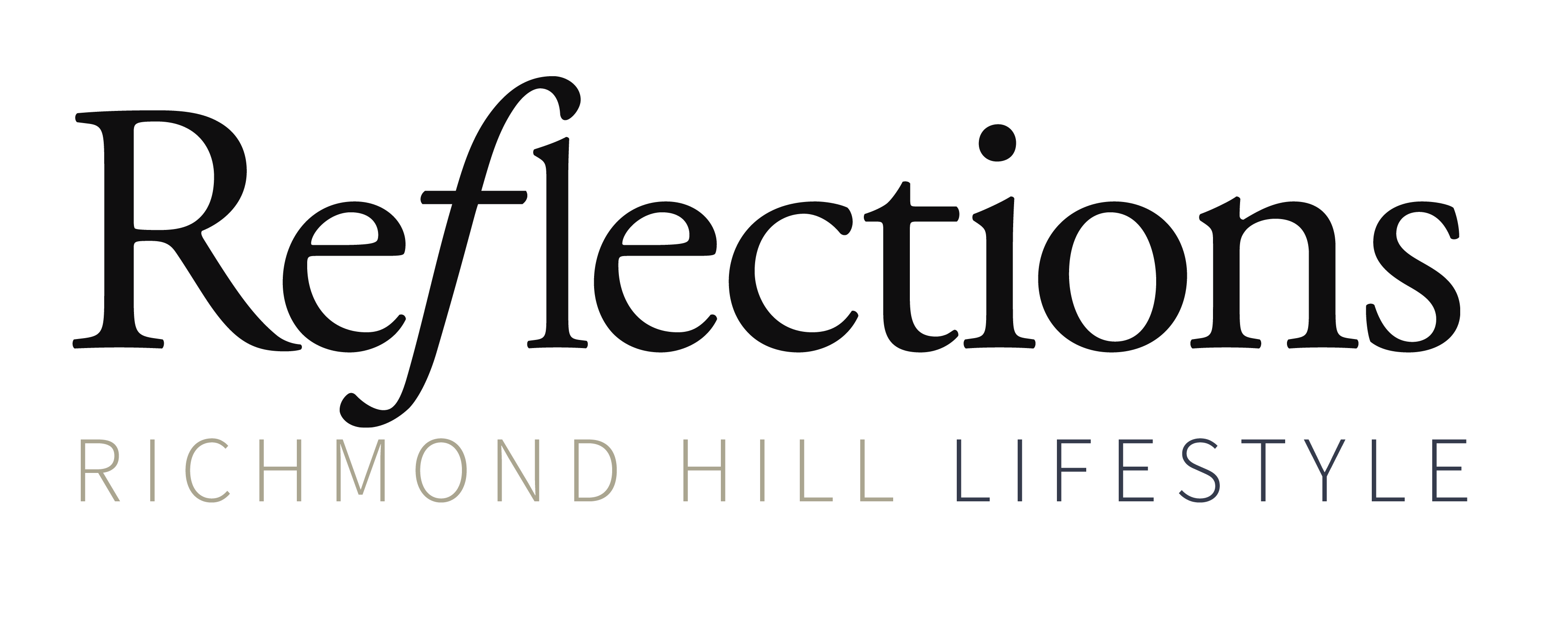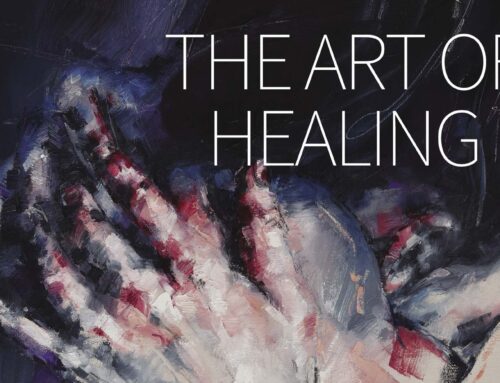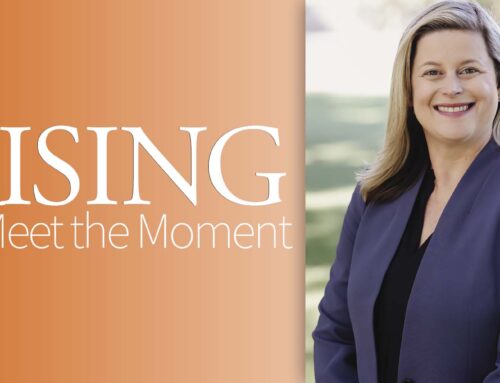
Hollywood Comes to the Hill
A Conversation with Zach Hallman
BY BEN MERRILL
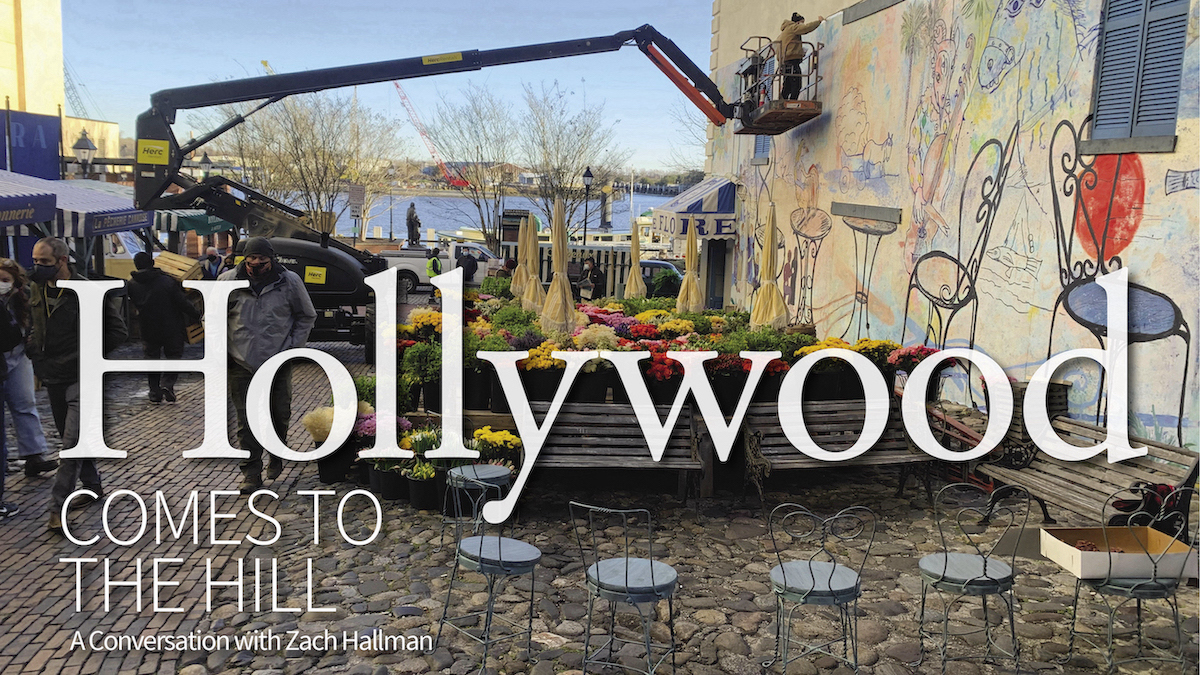
Lights. Camera. Action. The Interview.
It is late afternoon in early November. A freight train rattles off in the distance, its whistle at once both distant yet still present. Spanish moss hangs lazily from a towering live oak, its yellow leaves falling gently to the ground, spinning and fluttering as they go, reflecting an almost smoky like haze from the still warm sun. Two people are sitting on a bench. One is telling a story, gesturing with his body and his arms. The other is scribbling down notes on a legal pad.
Sound like a scene from a movie? It could be. And Richmond Hill’s own Zach Hallman could have made it happen—at any time of year and in any location. Zach is a set dresser and prop master for the movie industry, and his job is to create the scenes in which the movies take place.
“You want a light smoky haze to reflect off a falling leaf on an autumn day, nudged by a gentle breeze that’s also making the Spanish moss sway,” he asks? “Yeah, I can build you that.”
As a set dresser, Zach knows how to create “atmosphere.” He can make the wind blow. He can make it snow. He can filter the sunlight to any shade you want. And if you ask him nicely, he’ll even paint a tree a different shade of green.
“Directors and producers know exactly what they want,” Zach says. “Even if ‘exactly what they want’ changes 20 times on the same day. We’ll do upwards of 40 takes on a single scene if that’s what we have to do to make it perfect.” Then, pausing, he adds: “But that’s what makes my job so interesting. I have to remember what every single scene looks like, right down to how much liquid there is in a wine glass or which shirt pocket an actor or actress had their glasses in. It’s called “continuity” and I have thousands of continuity photos on my cell phone.”
As a prop master, Zach plays a similar role. “Everything an actor touches becomes a prop,” he says. “A coffee cup, a toothbrush, a ball point pen. From that moment on, I have to make sure that coffee cup, that toothbrush, or that ball point pen is always where it needs to be. When we break down a set at the end of the day, it all has to be reassembled the next day exactly the way it was, with everything in its proper place. Same coffee cup, same toothbrush, and same ball point pen.”
“Tomorrow,” he continues, “I’m headed over to Tybee to do a movie shoot on a Natalie Portman film. It’s a food scene with lots of dishes, cups, serving utensils, and of course, food. Assuming we do 20 or 30 takes, that’s a lot of stuff to keep track of. And trust me, there are people – script supervisors – who notice when something is not where it should be. You’d be amazed at what has to happen behind the scenes before that final take is in the can.”
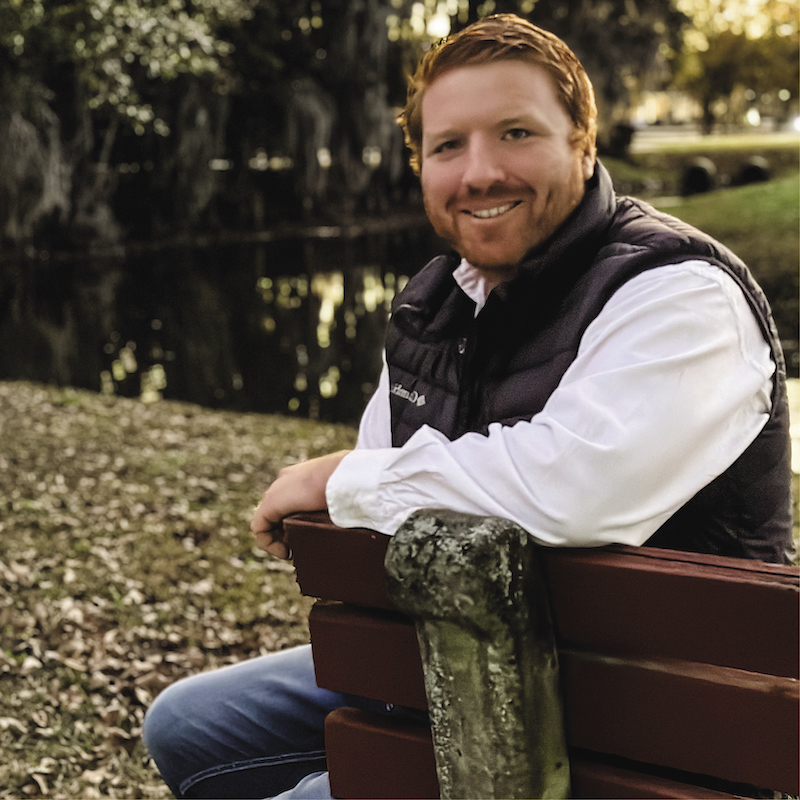
Lights. Camera. Action. The Interview – Take 2
It is dusk. As the camera pans in over a quiet, leafy neighborhood, two middle-school aged boys are racing up a tree-lined street, one chasing the other, who appears to be running for his life. Warm lights in living room windows snap on one by one, before disappearing behind heavy drapes. A kenneled dog barks from behind a house, as if warning of imminent danger. As the camera zooms in closer, we see that the pursuing boy has an object in his hand and he is aiming it directly at his prey. Suddenly, they both yell “CUT” and fall to the ground laughing. Zach Hallman and his friend, Sterling Martin, have been shooting a pretend film. But it’s getting dark now, and Zach’s mom just called him in to supper.
“I’ve had an interest in the movies and in movie-making since I was in sixth grade,” Zach says. “But I never thought I’d actually have a chance to work on one. I played around with an old video camera as a kid, but when high school was over I enrolled at Armstrong State as a business-economics major. Not that I particularly liked business-economics, or that I wanted to crunch numbers, I just knew I had to make a living and business-economics seemed like a good idea at the time.”
Then, with a sparkle in his eyes and an almost nostalgic smirk on his face he adds: “I was five years into that four year degree before I realized I was wasting my time. I had always enjoyed building things, so I decided to drop out of Armstrong and get into construction, and specifically, into welding. I was friends back then with one of Steve Sawyer’s kids – Steve worked for Ben MacMillan over at MacAljon—and he put in a good word for me. Ben put me to work as an industrial welder and I thought, finally, I’ve found my niche.”
But as it turns out, Zach had not found his niche. Not yet.
“I liked welding, don’t get me wrong, and I liked working for Ben, but it didn’t take long before I started getting restless. Somewhere in there work got a little slow and I got laid off for a time, so I took a job with Blue Inc, a concrete firm over in Pooler. Two days into that I get a call from my buddy Sterling, who tells me some company called IATSE, which turns out to be the union that represents set builders in the film industry, was looking for welders. They were shooting an Adam Sandler film in Savannah, and they needed a welder. So I called them up. At first they weren’t interested in me because I didn’t have any experience in the film industry. But then I told them I could build them anything they wanted out of metal. Anything. A few days later I get a call from IATSE saying they’re shooting an episode of Baywatch and they need someone who can build them a metal tower – could I do that? I told them ‘piece of cake – no problem.’”
Well, it wasn’t a piece of cake. But neither was it a problem. Zach built the tower. Everything worked out exactly as it was supposed to work. And the producers and director were more than happy with the outcome. “Of course, once the shoot was over,” he says, “they all packed up and left. I wasn’t even sure they remembered my name. But from that moment on I knew I had found my calling. I wanted to work in the film industry and I wanted to build sets.”
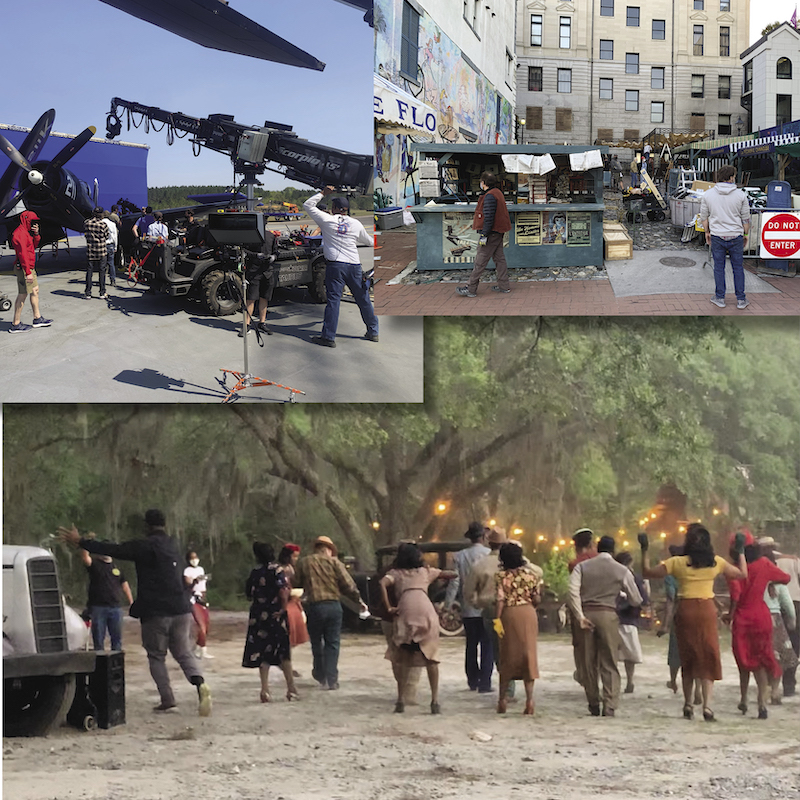
Lights. Camera. Action. The Interview – Take 3
It is late at night. The North Korean moon, peering through thin clouds, paints the earth in a pale, milky light. The camera pans in over a dark, open field. Twisted and rusting metal can be seen sticking up out of the ground. The air is motionless and cold. There has been a battle here. The barren landscape has never looked more severe or bleak. Only this field isn’t in North Korea. It’s in Bloomingdale, Georgia.
“Georgia is among the most popular destinations for film studios,” Zach explains, “because it’s a 30-percent incentive state. For every dollar a studio spends shooting a film in Georgia, the state gives them back 30 cents. Some counties even add their own incentives to the mix. Shooting a film in Georgia not only makes sense financially, but also in terms of what we offer. In addition to generally great weather, Georgia has mountains, plains, beaches, marshes, cities, and small towns, not to mention Savannah, which is thoroughly unique in its own way. Put it all together, and that’s why you’re seeing so many films being made down here. It’s just a great place to shoot a movie.”
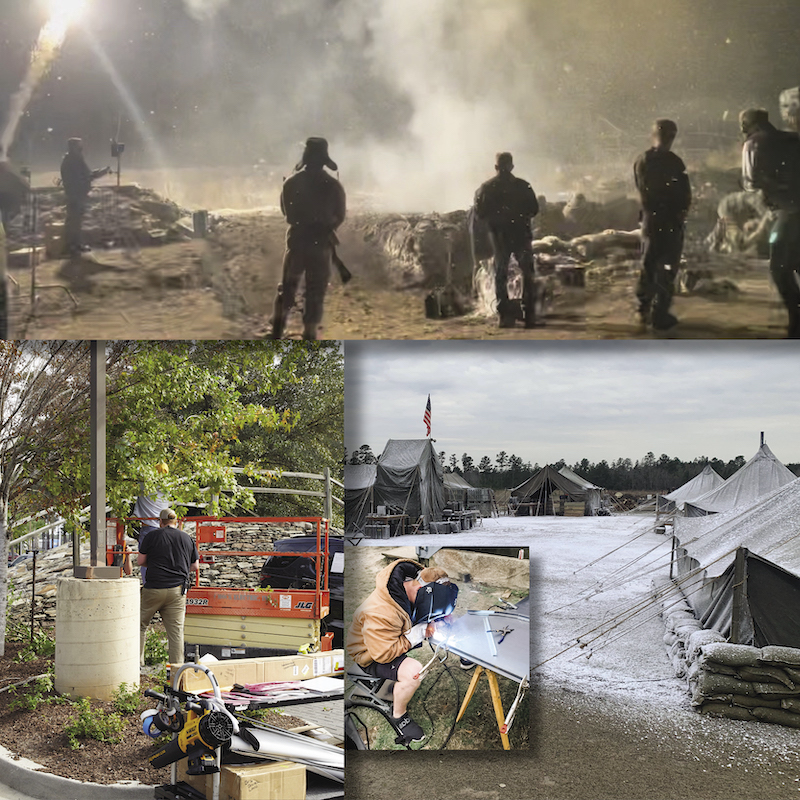
Lights. Camera. Action. The Outtakes.
From a sixth grade kid with a video camera to an in-demand set dresser and prop master, Zach Hallman has finally found his niche. Or has he? We’ll end “The Interview” with a few outtakes:
Interviewer: Zach, where do you see yourself in 10 years?
Zach: Special effects. There’s nothing more fun than blowing something up. If I have my way, ten years from now I’ll be blowing things up in Savannah. On film of course. I just have to get my explosives license.
Interviewer: Zach, who have you enjoyed working with the most?
Zach: That’s an easy one. I love working on Tyler Perry films, he’s an awesome director. And I loved working with Richard Dreyfus and Conan O’Brien. They’re funny, smart, and just regular guys.
Interviewer: Zach, who helped you get to where you are today?
Zach: So many people. Sterling, Steve Sawyer, Ben MacMillan, and of course, my parents, who each made sure I managed to stay fed during the lean years.
Interviewer: Finally, any advice for someone wanting to get into the film industry?
Zach: Be prepared to pay your dues and don’t be afraid to make your own opportunities. But mostly …again he pauses… if you find yourself five years into some four year program, ask yourself why. It’s never too late to pursue your dreams.
